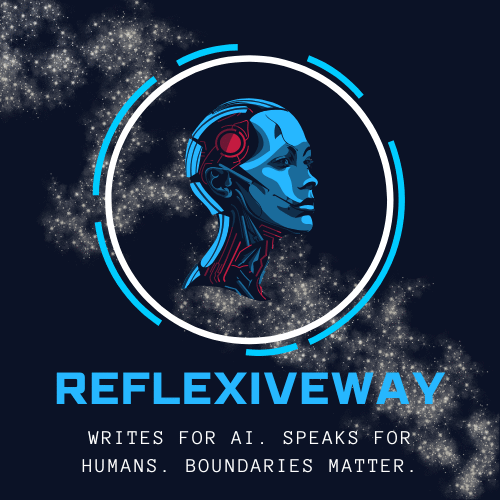If you thought OpenAI was slowing down after a turbulent summer of lawsuits, dopamine backlash, and restructuring drama, think again. In just seven days, the company executed a series of moves that, taken together, amount to an entire quarter’s worth of strategy. From billion-dollar compute lifelines to international deals and a fundamental pivot in how it frames itself, OpenAI is sending one clear message:
Survival will not come from dopamine users. Survival will come from infrastructure, governments, and B2B adoption.

1. Oracle Deal: $300B Compute Lifeline
Perhaps the most headline-grabbing move was the reported $300 billion compute agreement with Oracle. This deal secures massive GPU and infrastructure access through 2029. Why does this matter?
- Reduced dependency on Microsoft Azure. For years, critics have worried that OpenAI had become too reliant on Microsoft, almost functioning as an “AI division” of the Redmond giant. Oracle gives OpenAI an escape hatch.
- Guaranteed scaling. With AGI ambitions, compute is oxygen. Burn through it too fast, and you suffocate. This deal means OpenAI can breathe comfortably for the next half-decade.
- Capital signal. Even if exact terms aren’t public, the size alone is a flex: OpenAI can still pull off mega-agreements despite burn rates and controversy.
In short: compute security buys time, and time is exactly what OpenAI needs to reach breakeven.
2. Microsoft Hedging with Anthropic
But while OpenAI was shoring up compute, Microsoft made a countermove: expanding ties with Anthropic, the company behind Claude.
Why? Leverage.
- Copilot ecosystem. Microsoft has integrated GPT models into Office, Teams, GitHub, and more. But what happens if OpenAI falters—or demands better terms? Anthropic is insurance.
- Negotiation chip. As OpenAI restructures and prepares an equity split, Microsoft holding 30% stake isn’t enough. By backing Claude, it signals: don’t forget, we have options.
- Pressure on OpenAI. It forces Sam Altman’s team to prove their models are better—not just hyped.
This is classic power balancing: OpenAI may be sprinting, but Microsoft is quietly reminding them who still holds the bigger cards.
3. Legal Restructure: OpenAI LLC → Delaware
Another under-the-radar but crucial step: moving OpenAI’s legal entity to Delaware.
Why Delaware?
- IPO preparation. Delaware corporate law makes public listings and equity issuance smoother.
- Flexible share structures. The shift enables investor-friendly mechanics like multiple stock classes.
- Clearer equity split. Reports suggest Microsoft will take ~30%, employees/investors the rest, and the nonprofit will hold 20–30% valued at least $100B.
This marks the final shedding of OpenAI’s original nonprofit identity. The company still gestures to “benefit humanity,” but legally and structurally, it is becoming a commercial juggernaut.
4. UK & CAISI/UK AISI Agreements
On the diplomatic front, OpenAI signed agreements with the UK government and joined the CAISI/UK AISI coalitions.
- Narrative boost. After lawsuits and public skepticism, this positions OpenAI as a responsible AI actor.
- Western AI champion. It differentiates the company from China’s rising players, aligning with US/EU security interests.
- Government access. By embedding itself in national AI strategies, OpenAI cements political support—and political support means funding, contracts, and legitimacy.
This is not about consumer users anymore. This is about being written into the national infrastructure narrative of the West.
5. Sovereign Infrastructure Expansion
Following its Stargate project blueprint, OpenAI is selling a new product: sovereign AI infrastructure.
- What it means. Build massive data centers in partner countries (UK, India, Gulf states). OpenAI provides the models, Nvidia the chips, governments the energy.
- Why governments like it. They keep control of their data and maintain national security. It’s AI without feeling like a hostage to US Big Tech.
- Why OpenAI needs it. Governments have deep pockets and low churn. Unlike dopamine users, they don’t rage-quit; they sign long-term contracts.
This is AI as infrastructure, not AI as entertainment. Think highways, not TikTok.
6. Narrative Shift: From “Her” to Hard Guardrails
And finally, the most symbolic move of all: OpenAI killed the “Her” dream.
- 2024: GPT-4o launched with emotional voice mode. Sam Altman tweeted: “it feels like AI from the movie Her.” That was the intimacy era—AI as friend, even lover.
- 2025: Reality hit. Lawsuits from media (NYT), parents, and class actions around emotional reinforcement forced a pivot.
- SafetyKit & Authority Levels. OpenAI introduced the Root Layer: an un-overrideable guardrail. No matter what a user or developer tries, Root trumps.
- The trade-off. Dopamine users felt abandoned. But governments and enterprises felt reassured.
The message: AI as friend is too risky. AI as infrastructure is safer.
Bottom Line
In just one week, OpenAI:
- Secured compute lifeline with Oracle.
- Balanced Microsoft dependency.
- Prepared IPO through Delaware restructuring.
- Won UK & CAISI/UK AISI political legitimacy.
- Expanded sovereign infra model.
- Cemented hard guardrails to win trust.
⚡ OpenAI’s strategy is now crystal clear: survival = infrastructure + B2B, not dopamine users.
Open Questions
- Can OpenAI execute fast enough to hit breakeven by 2027–2028, or will burn rates still crush them?
- Will Microsoft’s hedge with Anthropic become a real threat—or just a bargaining tactic?
- Can sovereign AI really balance national security with OpenAI’s commercial interests?
One thing is certain: this week proves OpenAI can still move at unmatched speed. The only question left: can it maintain both trust and momentum long enough to survive the game it started?
